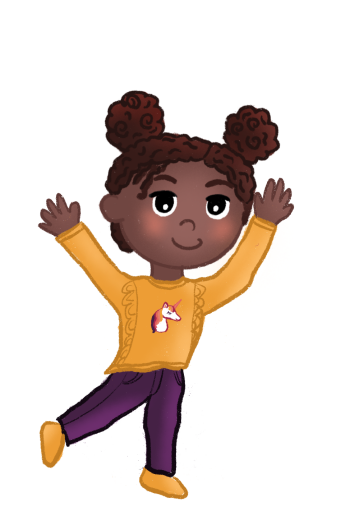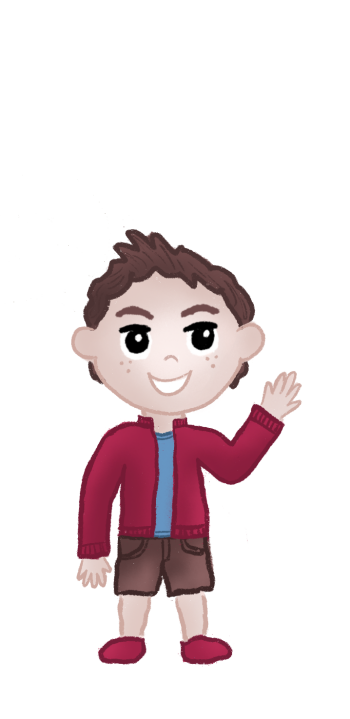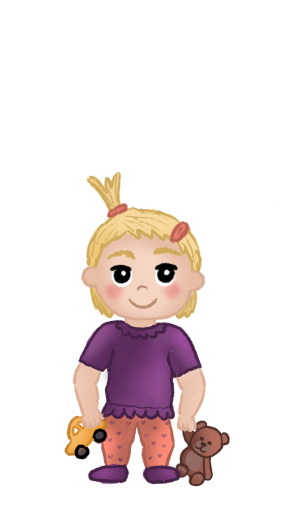
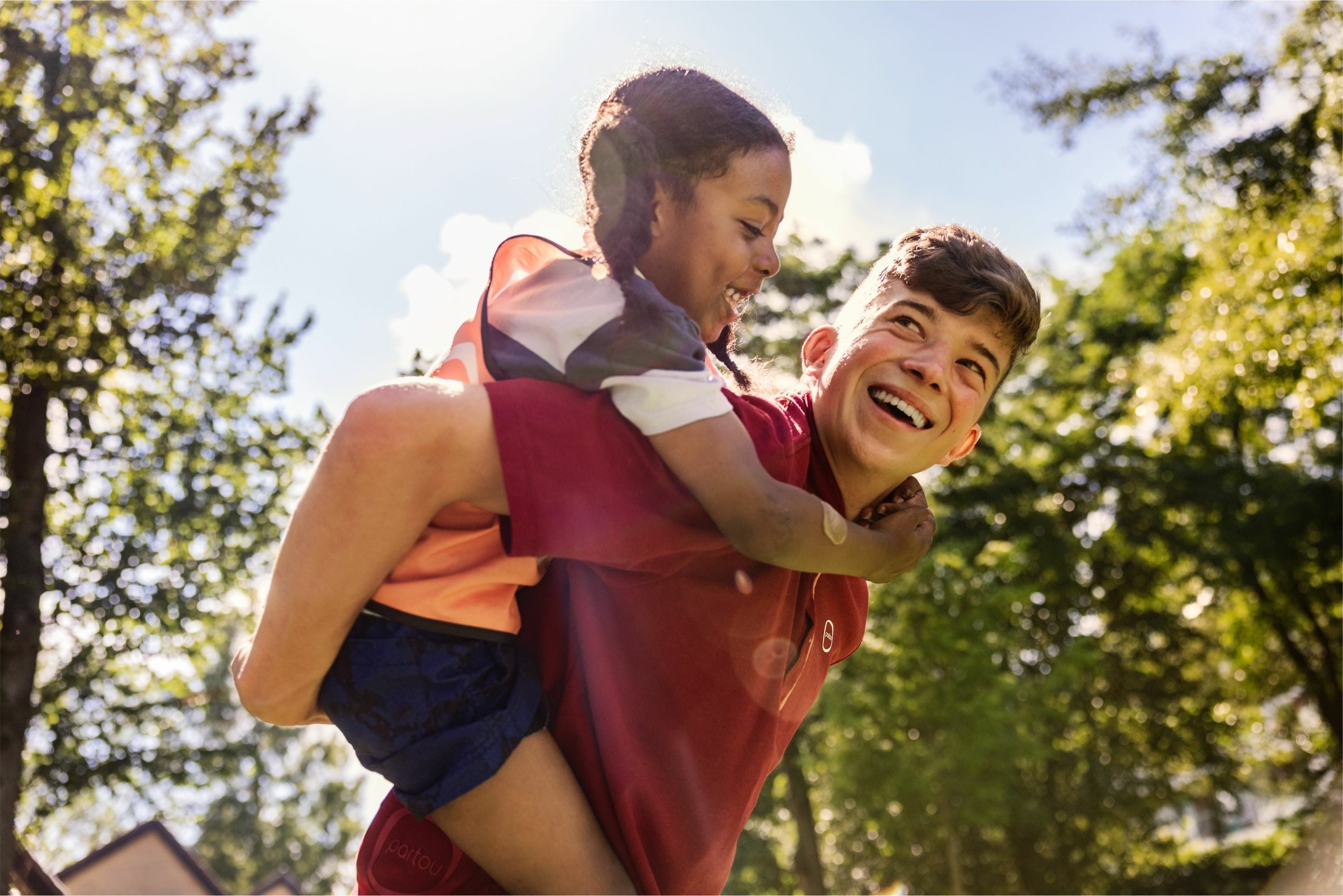
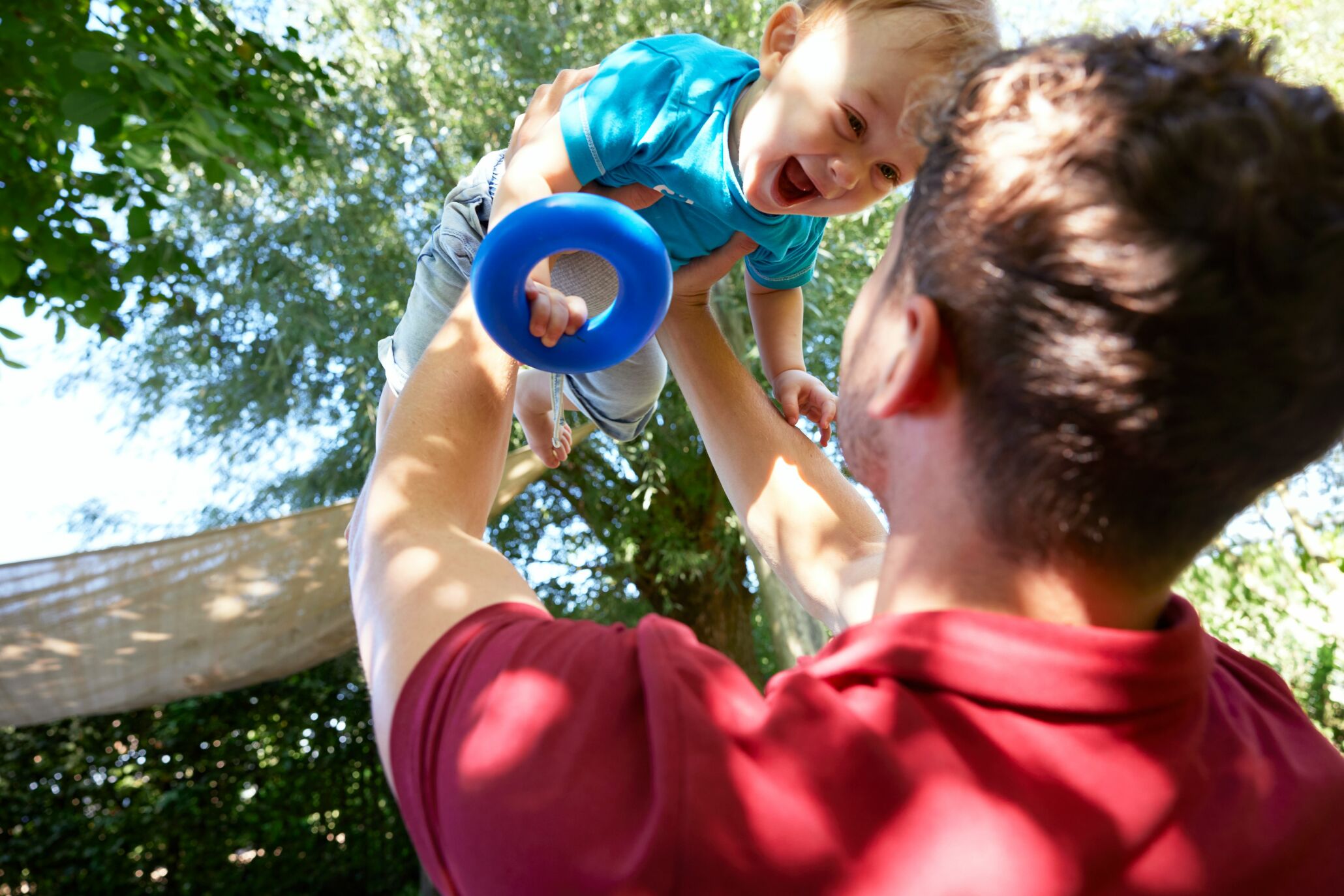
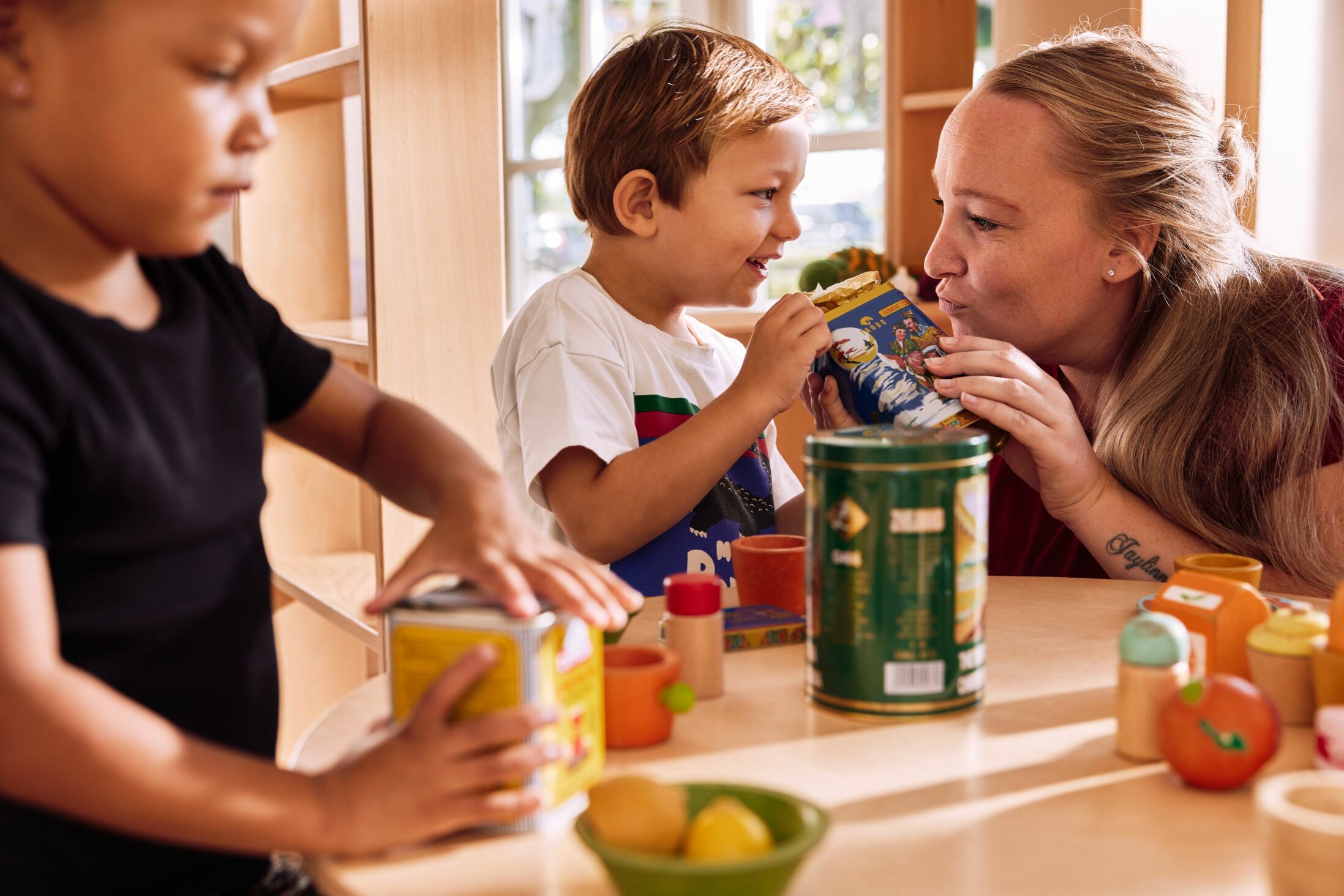
Different together
Building self-confidence
From an early age
respect for autonomy
We give children room to find their own solutions, to make choices, to bring in their own ideas and to do things themselves. We respect autonomy. We believe in the power of every child and give them a voice. Even if they cannot talk yet. We then put words to what we see and check whether we understood a child correctly.
Everyone can be themselves at our childcare. We talk with each other and not about each other. We are curious about each other's backgrounds and have an open mind. This makes it easier for us to put ourselves in each other's shoes. We help children discover our diverse world with respect. And we lead by example. If we notice prejudice, bullying or exclusion? Then we set boundaries and follow our policy 'dealing with bullying'. If children see differences between themselves and another child? Then there is always room for curious questions. We are happy to answer them. We give room to events from different cultures and on birthdays the birthday boy or girl is at the center of attention. In this way, we show that everyone belongs.
When children are older, we let them think along about the activities or about the question of what play material we are going to purchase for instance. Children who are allowed to participate in decision-making and contribute their own ideas gain more self-confidence. They experience that they are also taken into account. That does not mean they always get their way. But we do need to listen and take each other into account. We call this child participation. At the out-of-school care, we come up with the rules of the group together. As a result, children learn to be considerate of others. They also learn to internalize norms and values. That forms their inner compass, their conscience.
It starts with the babies. They are given room to practice at their own pace. Toddlers can take toys out of the cabinet themselves and toddlers can choose their own sandwich spread. Negotiating and dealing with disappointments is also part of it. If that does not work so well yet, we help the children by explaining in a positive way why something does or does not / cannot work.
We give all children a voice and room to be themselves
Playing field
How do we do it?
The best way to follow babies is when we sit on the floor with them. In this way, we observe the movements and facial expressions of each baby up close. We also listen carefully to their sounds. As a result, we see their needs and interests, which we can then respond to. We do this by making contact and adding something new - enriching it - for example by rolling a ball to challenge the baby to crawl towards it. Or placing a toy just out of the baby's reach, to encourage them to roll over.
Infants always seek safe and trusted contact during their first tentative explorations through the group room or the garden. At this age, we also stay close by and make contact. Within the boundaries of the space available, they decide for themselves at what distance they still feel safe. You regularly see them looking at what distance they are and making contact. Infants do this 'questioning' when they feel insecure for a moment or when they want to share experiences. 'Do you see me?', 'Is this allowed?' or 'Do you see what I see?' From that safe feeling, an infant can discover and investigate all kinds of materials and places in the group. We also play along and help children if it does not work out yet. But first, we let them try for themselves.
Toddlers and preschoolers love to experiment. They are always looking for new experiences and learning by doing. At those moments, we let the children play undisturbed while we observe. In this way, we collect information about the development of the children, about their interests or about the way they play together. At this age, children sometimes like to play out of sight for a while. But they also need attention for their play and the challenges they face in the process. We are therefore available, but sometimes a bit more remotely. We encourage children who do not play or find it difficult to play by choosing something together. We then play along with them for a while or pair the child with another child with the same interest. At other times, our role is more active. Then we enrich the playing by participating and by asking questions. "Who are you making that cake for?" Or to add something new: questions that make children think or make discoveries. "Oops, we want to go outside, but it's raining. What do we need to play outside in the rain?'
Children from 7 to 9 years old start to think more rationally and logically. They want to gain more knowledge and have all kinds of questions. They are also better able to put themselves in the other person's shoes. They are more focused on peers than adults, and friendships are becoming increasingly important. At this age, children want to fit in and practice their role in the group. They are becoming more and more independent and with that our role is also changing. We stay at a distance more often. And sometimes we take the lead a little more.
Children from 10 to 12 years old are increasingly in search of their own identity. They ask themselves: what do I want and who am I? The world around them is getting bigger and bigger and the search for their own place in this world is part of it. We talk about all kinds of things and do not shy away from difficult topics. Children then learn to form their own opinions and to understand and respect the differences. During this period, we act as coaches, inspirers, mentors and advisors. We work with humour and the occasional wink.
Processing and boredom
Explore, connect and enrich
Flow
Leeway
Zone of proximate development
stimulating development
We let the children decide for themselves what they want to discover as much as possible. And also what, how, with what and with whom they want to play. Because you learn the easiest when you are comfortable in your own skin and do something that you enjoy. If you challenge yourself a bit. In other words, learning in a playful way!
In order to be able to process everything you have learned, it is indispensable to relax, loiter or bore yourself from time to time. This gives your brain a rest. By not always intervening immediately when children are bored, we stimulate their own creativity. New ideas will then arise automatically!
We give children room to discover for themselves. By keeping a close eye on their playing, by looking at their facial expressions and by listening to their voices, we assess if there is a need for help. We move with the situation: we either participate or take a step back to see what happens. The older children get – at out-of-school care, for example – the more we keep our distance during play. Yet we always stay in the area.
If we give them enough time and space, we give children the opportunity to fully immerse themselves in their play. That is what we call high play engagement or flow. In their flow, children pay so much attention to what they are doing that they forget the world around them. They do what they can already do themselves and challenge themselves to go a little further than that. We love to see this mental state in children, because this is where fun and development come together. In flow, children often gain new insights. And learn very fast.
We are in the area and keep in touch. That's what we call being available. We observe closely and follow the children's play. In this way, we can see where their development opportunities lie. A helping hand or encouragement to try again at exactly the right time can make all the difference. We then enrich their play by offering them something that helps them move forward. For example, by asking a question or by adding the right play material.
Development opportunities arise mainly in the area between what a child can already do on its own and what a child cannot yet do on its own. We call this area the zone of proximate development: here we encourage children to take a step further.
We explore, connect and enrich
Play area and rules of the game
structuring and setting boundaries
It is the same old story every day, which sounds a bit boring perhaps. But we know that repetition works very well for children, as do rituals. It provides structure. Although every day is different of course, we do like a fixed daily rhythm. Read more about this in the programme and activities.
We give children plenty of room to play. Of course, this also includes certain rules. We give them the freedom to take the initiative, but also take the lead if we have to. We limit behaviour where necessary, but do not punish. If children hurt each other, exclude each other or bully each other, we are adamant. We then follow our policy 'dealing with bullying'. We talk about what happened, look at what goes well and compliment children on it. Have they forgotten the rules for a moment? Then we remind them in a friendly and calm way.
Rules of the game, structure and boundaries give children something to hold on to. That way, they know where they stand. This makes the days predictable and provides emotional security. As a result, they gain more self-confidence. They also learn to regulate their behaviour. They develop their norms and values and their conscience. Of course, we continue to vary at the fixed rhythm, because we like to discover something new and look closely at the needs of the group and the individual children.
We offer a clear playing field
With our interaction skills, we continuously work on our solid pedagogical foundation and give substance to the four pedagogical basic goals. Interaction is an investment in the future. This allows children to participate confidently and with resilience, and they learn to contribute to the world around them. Now and in the future.
About our interaction with children
sensitive responsiveness
We are a safe haven for children. We are always around to comfort, give direction and support your child. We talk positively and lovingly. And we look at the children with interest. We give them emotional support. We call this sensitive responsiveness. That is our basic attitude. We respond when children want to connect, with or without words. Sometimes a smile, a hug or eye contact is enough to go back playing. Or the simple question about how their school day went. This way, all children feel heard and seen.
We make sure that every child feels heard and seen
Our professionals are the best when it comes to dealing with children. With the six interaction skills, they ensure that every child feels seen and heard.
Interacting
with children
What is learned in the cradle lasts till the tomb
Guiding and stimulating
supervise interactions
The great added value of childcare is that there are other children. It's a kind of society in miniature. There are other children and adults with different backgrounds, talents, characters, needs and interests. Children can practice with everything you need to participate in a democratic society.
Guiding interactions starts with the babies. From the age of six months, they already recognize other children in the group. We put them together so they can look at each other, respond to each other and find safety with each other.
Infants and young toddlers like to hang out with each other, but mainly play together or next to each other for a short time. It is still hard to really share. Sometimes they are a bit anxious to take initiative themselves or they do not understand each other so well yet. Then we help them to talk to each other or play a game with each other. Like rolling over with a ball or practicing each other's names. That's not only fun, it also connects. We sometimes let an infant help feed a baby. And when we go outside, the older children help the younger children put on their coats. In this way, we teach children to pick up on each other's signals.
In the older toddler and preschool phase, children start to play with each other more and more, instead of next to each other. A disagreement, conflict or small quarrel is sometimes part of the game. Because they sometimes have to share toys and you cannot always get your way. Do not worry, this happens in adult life too. If it is difficult, we first observe if they can solve it themselves. If not, we will step in to help negotiate and make amends. A little help in putting emotions, ideas and desires into words can make a big difference. In this way, children experience that they have influence and are seen and heard. This will help them to be stronger later on in life.
Older children are often attracted to children with similar interests. They go skating, playing football or get creative together. We coach, inspire and advise the children in this phase. We leave the initiative more to the children and see if they need our guidance.
Listening, giving your opinion, dealing with resistance and different ideas, problem-solving, working together and making choices. But also taking care of each other. In the group, children can play and try out different roles. In this way, they get to know themselves, their own talents and interests well. Our pedagogical staff provide the right conditions for children to play with each other. They also guide children in this. This way, they feel safe with each other and learn to build positive relationships. They help children connect with each other every day. We teach children that everyone belongs and that every opinion counts.
We help children interact with each other
Vocabulary
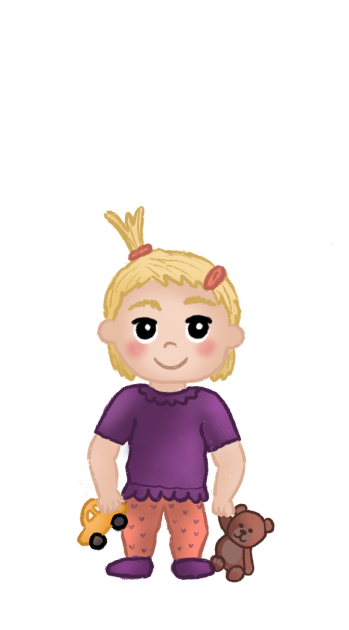
Babies

Infants
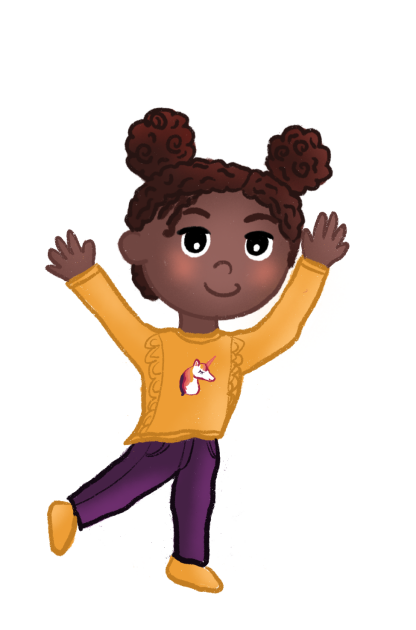
Toddlers
Language development from 0-4 years
A wonderful opportunity for real contact
Words to your feelings
talking and explaining
We communicate with children throughout the day, no matter how young they are. By talking to them a lot, explaining them and listening carefully, we give them the opportunity to learn to understand their world and feelings.
Self-awareness
To help children with their sense of self, we choose to call ourselves "I" instead of using our own name in the third person. We encourage the children to do the same, to learn the difference between 'I' and 'you', 'we' and 'you'. They learn early on to make correct sentences in the Dutch language. And it helps them understand how a group is put together.
Personal moments, when being one-on-one, are a wonderful opportunity to connect and bond as well. That is why we take our time during those moments. When changing, for example, we describe what we do, we put words to what we see and we respond to what a baby is paying attention to at that moment. We use gentle movements when picking up, putting down and grooming. Plenty of opportunity to learn to trust each other. And good for language development.
Tip: in our magazine Baby Time you will find an interesting article about language development of young children and we give you three tips on how to get started with language development at home.
By talking, reading aloud and singing songs, children learn to recognize the sounds of our language and will soon be able to use and understand them. This is a fixed part of our day. This makes it easier for them to make contact and stand up for themselves, now and later. We have books with stories, but also with just pictures. We describe what we see, let the children point to something or imitate animal sounds together. You can read more about language development in the building block Stage & Expression.
Children learn to link words to events. That makes it easier to express themselves, to make clear what they see, mean, want and feel. This is important because when you feel seen and heard, you feel safe and secure. We describe what happens, what we see and what we do. In a calm way, to give children time to process the information. It allows them to express their feelings – once they can talk – with words. As soon as talking succeeds, we also challenge them to communicate with us and with peers with words.
We use clear language
What is learned in the cradle lasts till the tomb
Guiding and stimulating
supervise interactions
The great added value of childcare is that there are other children. It's a kind of society in miniature. There are other children and adults with different backgrounds, talents, characters, needs and interests. Children can practice with everything you need to participate in a democratic society.
Guiding interactions starts with the babies. From the age of six months, they already recognize other children in the group. We put them together so they can look at each other, respond to each other and find safety with each other.
Infants and young toddlers like to hang out with each other, but mainly play together or next to each other for a short time. It is still hard to really share. Sometimes they are a bit anxious to take initiative themselves or they do not understand each other so well yet. Then we help them to talk to each other or play a game with each other. Like rolling over with a ball or practicing each other's names. That's not only fun, it also connects. We sometimes let an infant help feed a baby. And when we go outside, the older children help the younger children put on their coats. In this way, we teach children to pick up on each other's signals.
In the older toddler and preschool phase, children start to play with each other more and more, instead of next to each other. A disagreement, conflict or small quarrel is sometimes part of the game. Because they sometimes have to share toys and you cannot always get your way. Do not worry, this happens in adult life too. If it is difficult, we first observe if they can solve it themselves. If not, we will step in to help negotiate and make amends. A little help in putting emotions, ideas and desires into words can make a big difference. In this way, children experience that they have influence and are seen and heard. This will help them to be stronger later on in life.
Older children are often attracted to children with similar interests. They go skating, playing football or get creative together. We coach, inspire and advise the children in this phase. We leave the initiative more to the children and see if they need our guidance.
Listening, giving your opinion, dealing with resistance and different ideas, problem-solving, working together and making choices. But also taking care of each other. In the group, children can play and try out different roles. In this way, they get to know themselves, their own talents and interests well. Our pedagogical staff provide the right conditions for children to play with each other. They also guide children in this. This way, they feel safe with each other and learn to build positive relationships. They help children connect with each other every day. We teach children that everyone belongs and that every opinion counts.
We help children interact with each other
Processing and boredom
Explore, connect and enrich
Flow
Leeway
Zone of proximate development
stimulating development
We let the children decide for themselves what they want to discover as much as possible. And also what, how, with what and with whom they want to play. Because you learn the easiest when you are comfortable in your own skin and do something that you enjoy. If you challenge yourself a bit. In other words, learning in a playful way!
The best way to follow babies is when we sit on the floor with them. In this way, we observe the movements and facial expressions of each baby up close. We also listen carefully to their sounds. As a result, we see their needs and interests, which we can then respond to. We do this by making contact and adding something new - enriching it - for example by rolling a ball to challenge the baby to crawl towards it. Or placing a toy just out of the baby's reach, to encourage them to roll over.
Infants always seek safe and trusted contact during their first tentative explorations through the group room or the garden. At this age, we also stay close by and make contact. Within the boundaries of the space available, they decide for themselves at what distance they still feel safe. You regularly see them looking at what distance they are and making contact. Infants do this 'questioning' when they feel insecure for a moment or when they want to share experiences. 'Do you see me?', 'Is this allowed?' or 'Do you see what I see?' From that safe feeling, an infant can discover and investigate all kinds of materials and places in the group. We also play along and help children if it does not work out yet. But first, we let them try for themselves.
Toddlers and preschoolers love to experiment. They are always looking for new experiences and learning by doing. At those moments, we let the children play undisturbed while we observe. In this way, we collect information about the development of the children, about their interests or about the way they play together. At this age, children sometimes like to play out of sight for a while. But they also need attention for their play and the challenges they face in the process. We are therefore available, but sometimes a bit more remotely. We encourage children who do not play or find it difficult to play by choosing something together. We then play along with them for a while or pair the child with another child with the same interest. At other times, our role is more active. Then we enrich the playing by participating and by asking questions. "Who are you making that cake for?" Or to add something new: questions that make children think or make discoveries. "Oops, we want to go outside, but it's raining. What do we need to play outside in the rain?'
Children from 7 to 9 years old start to think more rationally and logically. They want to gain more knowledge and have all kinds of questions. They are also better able to put themselves in the other person's shoes. They are more focused on peers than adults, and friendships are becoming increasingly important. At this age, children want to fit in and practice their role in the group. They are becoming more and more independent and with that our role is also changing. We stay at a distance more often. And sometimes we take the lead a little more.
Children from 10 to 12 years old are increasingly in search of their own identity. They ask themselves: what do I want and who am I? The world around them is getting bigger and bigger and the search for their own place in this world is part of it. We talk about all kinds of things and do not shy away from difficult topics. Children then learn to form their own opinions and to understand and respect the differences. During this period, we act as coaches, inspirers, mentors and advisors. We work with humour and the occasional wink.
In order to be able to process everything you have learned, it is indispensable to relax, loiter or bore yourself from time to time. This gives your brain a rest. By not always intervening immediately when children are bored, we stimulate their own creativity. New ideas will then arise automatically!
We give children room to discover for themselves. By keeping a close eye on their playing, by looking at their facial expressions and by listening to their voices, we assess if there is a need for help. We move with the situation: we either participate or take a step back to see what happens. The older children get – at out-of-school care, for example – the more we keep our distance during play. Yet we always stay in the area.
If we give them enough time and space, we give children the opportunity to fully immerse themselves in their play. That is what we call high play engagement or flow. In their flow, children pay so much attention to what they are doing that they forget the world around them. They do what they can already do themselves and challenge themselves to go a little further than that. We love to see this mental state in children, because this is where fun and development come together. In flow, children often gain new insights. And learn very fast.
We are in the area and keep in touch. That's what we call being available. We observe closely and follow the children's play. In this way, we can see where their development opportunities lie. A helping hand or encouragement to try again at exactly the right time can make all the difference. We then enrich their play by offering them something that helps them move forward. For example, by asking a question or by adding the right play material.
Development opportunities arise mainly in the area between what a child can already do on its own and what a child cannot yet do on its own. We call this area the zone of proximate development: here we encourage children to take a step further.
We explore, connect and enrich

Language development from 0-4 years
A wonderful opportunity for real contact
Words to your feelings
talking and explaining
We communicate with children throughout the day, no matter how young they are. By talking to them a lot, explaining them and listening carefully, we give them the opportunity to learn to understand their world and feelings.
Vocabulary
Self-awareness
To help children with their sense of self, we choose to call ourselves "I" instead of using our own name in the third person. We encourage the children to do the same, to learn the difference between 'I' and 'you', 'we' and 'you'. They learn early on to make correct sentences in the Dutch language. And it helps them understand how a group is put together.
Personal moments, when being one-on-one, are a wonderful opportunity to connect and bond as well. That is why we take our time during those moments. When changing, for example, we describe what we do, we put words to what we see and we respond to what a baby is paying attention to at that moment. We use gentle movements when picking up, putting down and grooming. Plenty of opportunity to learn to trust each other. And good for language development.
Tip: in our magazine Baby Time you will find an interesting article about language development of young children and we give you three tips on how to get started with language development at home.
Babies communicate without words. They use sounds, body posture or facial expressions to let others know how they feel, that they are tired, have a full diaper or are hungry. We look at and listen carefully to them and give words to what we see. In the meantime, we continue to check whether we have understood the baby correctly and whether our response is the right one.
Infants express themselves partly with and partly without words, which sometimes involves pushing, hitting or biting. Sometimes they are not quite able to express themselves in words. They still need us to translate their behaviour into words. We do what we say and say what we do. When we tell them we are going outside, we also extend our hand to let your child walk with us onto the playground. We wait for your child's reaction and give room for his own input.
Toddlers using language more and more to indicate what they want and need. We encourage this through active listening. By talking to children, by asking questions and being curious. We give them room for their own input and ideas. And by singing and reading a lot!
By talking, reading aloud and singing songs, children learn to recognize the sounds of our language and will soon be able to use and understand them. This is a fixed part of our day. This makes it easier for them to make contact and stand up for themselves, now and later. We have books with stories, but also with just pictures. We describe what we see, let the children point to something or imitate animal sounds together. You can read more about language development in the building block Stage & Expression.
Children learn to link words to events. That makes it easier to express themselves, to make clear what they see, mean, want and feel. This is important because when you feel seen and heard, you feel safe and secure. We describe what happens, what we see and what we do. In a calm way, to give children time to process the information. It allows them to express their feelings – once they can talk – with words. As soon as talking succeeds, we also challenge them to communicate with us and with peers with words.
We use clear language
Play area and rules of the game
structuring and setting boundaries
It is the same old story every day, which sounds a bit boring perhaps. But we know that repetition works very well for children, as do rituals. It provides structure. Although every day is different of course, we do like a fixed daily rhythm. Read more about this in the programme and activities.
We give children plenty of room to play. Of course, this also includes certain rules. We give them the freedom to take the initiative, but also take the lead if we have to. We limit behaviour where necessary, but do not punish. If children hurt each other, exclude each other or bully each other, we are adamant. We then follow our policy 'dealing with bullying'. We talk about what happened, look at what goes well and compliment children on it. Have they forgotten the rules for a moment? Then we remind them in a friendly and calm way.
Rules of the game, structure and boundaries give children something to hold on to. That way, they know where they stand. This makes the days predictable and provides emotional security. As a result, they gain more self-confidence. They also learn to regulate their behaviour. They develop their norms and values and their conscience. Of course, we continue to vary at the fixed rhythm, because we like to discover something new and look closely at the needs of the group and the individual children.
We offer a clear playing field
sensitive responsiveness
We are a safe haven for children. We are always around to comfort, give direction and support your child. We talk positively and lovingly. And we look at the children with interest. We give them emotional support. We call this sensitive responsiveness. That is our basic attitude. We respond when children want to connect, with or without words. Sometimes a smile, a hug or eye contact is enough to go back playing. Or the simple question about how their school day went. This way, all children feel heard and seen.
We make sure that every child feels heard and seen
With our interaction skills, we continuously work on our solid pedagogical foundation and give substance to the four pedagogical basic goals. Interaction is an investment in the future. This allows children to participate confidently and with resilience, and they learn to contribute to the world around them. Now and in the future.
About our interaction with children
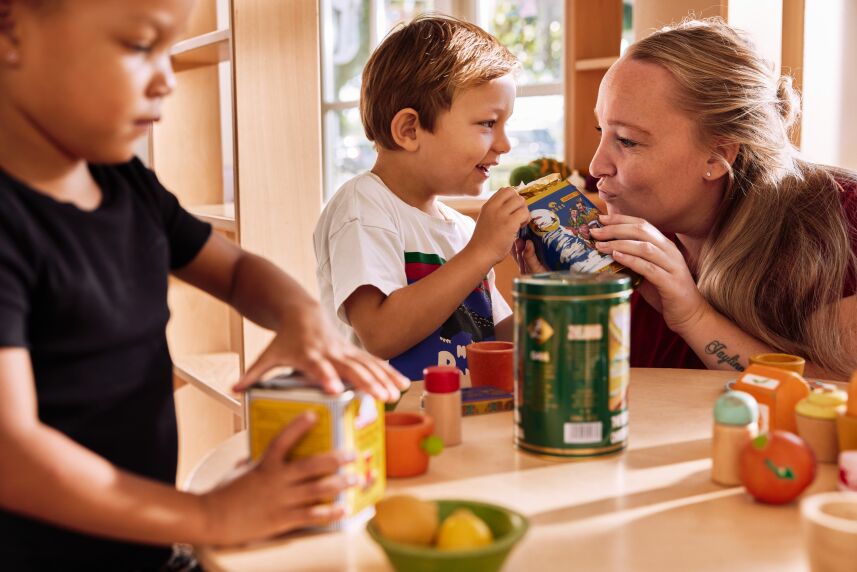
Different together
Building self-confidence
From an early age
respect for autonomy
We give children room to find their own solutions, to make choices, to bring in their own ideas and to do things themselves. We respect autonomy. We believe in the power of every child and give them a voice. Even if they cannot talk yet. We then put words to what we see and check whether we understood a child correctly.
Everyone can be themselves at our childcare. We talk with each other and not about each other. We are curious about each other's backgrounds and have an open mind. This makes it easier for us to put ourselves in each other's shoes. We help children discover our diverse world with respect. And we lead by example. If we notice prejudice, bullying or exclusion? Then we set boundaries and follow our policy 'dealing with bullying'. If children see differences between themselves and another child? Then there is always room for curious questions. We are happy to answer them. We give room to events from different cultures and on birthdays the birthday boy or girl is at the center of attention. In this way, we show that everyone belongs.
When children are older, we let them think along about the activities or about the question of what play material we are going to purchase for instance. Children who are allowed to participate in decision-making and contribute their own ideas gain more self-confidence. They experience that they are also taken into account. That does not mean they always get their way. But we do need to listen and take each other into account. We call this child participation. At the out-of-school care, we come up with the rules of the group together. As a result, children learn to be considerate of others. They also learn to internalize norms and values. That forms their inner compass, their conscience.
It starts with the babies. They are given room to practice at their own pace. Toddlers can take toys out of the cabinet themselves and toddlers can choose their own sandwich spread. Negotiating and dealing with disappointments is also part of it. If that does not work so well yet, we help the children by explaining in a positive way why something does or does not / cannot work.
We give all children a voice and room to be themselves

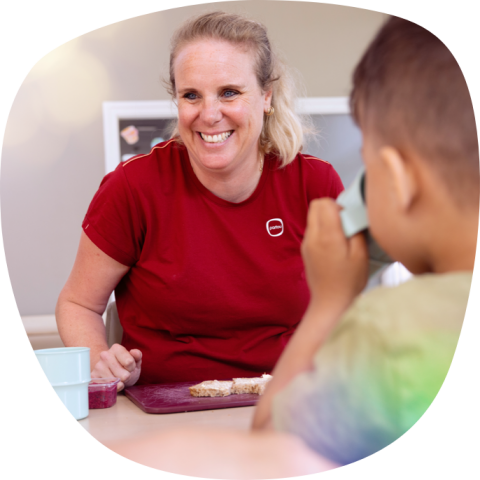
Our professionals are the best when it comes to dealing with children. With the six interaction skills, they ensure that every child feels seen and heard.
Interacting
with children
